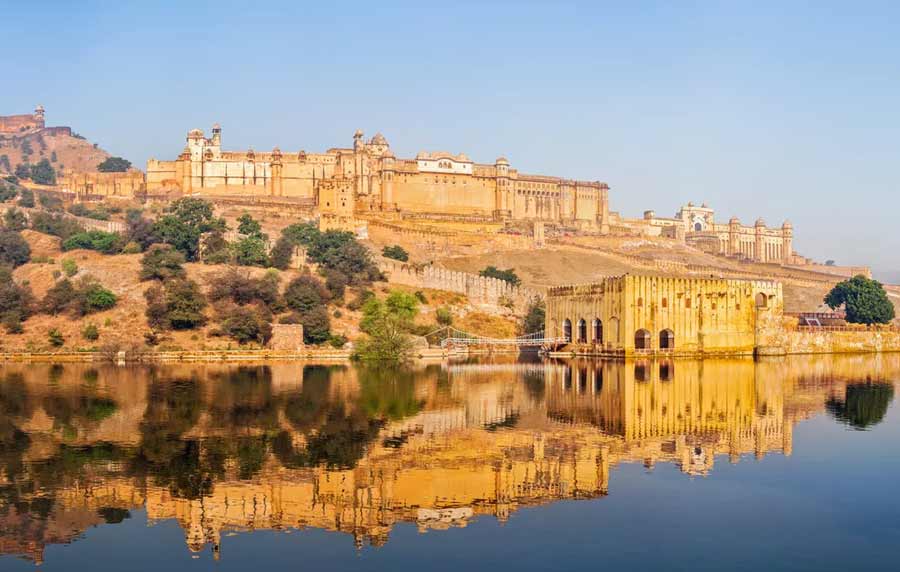Amber Fort
A UNESCO World Heritage Site – the Amber Fort popularly known as Amer Fort dates back to the 16th century and has an interesting story behind its name. Named after the Goddess Amba, the Goddess of Earth & Fertility the mighty fortress was originally created by Rajput Raja Man Singh -I. There is a scenic reflection in the calm waters of Lake Mahohta as you approach the historic palace.
History of the Amber Fort
Raja Alan Singh, who once ruled the Chanda clan of the Meenas, was probably the first king to ever set foot on Amer. He set up his palace on top of the hill, which currently holds the Amber fort, and started to rule over his subjects in the new town. He named his town Khogong. One day, an old woman with a child approached Raja Alan Singh, seeking refuge in his kingdom. The king took them in openheartedly, and even raised the child who was named Dhola Rae. Dhola Rae was then sent to Delhi to spread the legacy of the Meena kingdom. Instead of obeying his king’s orders, he came back with a small army of his own, which comprised of Rajputs. The Rajputs then slayed everyone belonging to the clad of Meenas, without showing them any sign of mercy. It is said that the massacre took place on the day of Diwali, when the Meenas were conducting a special ritual known as ‘Pitra Trapan.’ Back then, it was customary for the Meenas to set aside all their weapons while performing ‘Pitra Trapan.’ The Rajputs, who were aware of this practice, took advantage of the situation and made Khogong their own. This act of theirs was considered as coward and despicable. The town along with the beautiful hill which held the palace like fort now belonged to the Kachwaha Rajputs.
Raja Man Singh of the Kachwaha house took over the throne from his predecessor in the early 1600s. He then started building the Amber fort after destroying the structure that was already built on top of the hill. The fort was further developed by the successor of Raja Man Singh, Jai Singh I. Over the next two centuries or so, the fort underwent continuous renovations and improvements under the reign of various Rajput Maharajas including Mirza Raja Jai Singh I. The present fort was completed in the late 16th century. In 1727, the Maharajas of Rajput decided to shift their capital from Amer to Jaipur, leaving no further changes to the appearance of the fort.
UNESCO World Heritage Sites Rajasthan
Rajasthan, in India literally draws its name from the fact that it was once home to the Kings of the country. The royal legacy that the country saw in the Rajput and Mughal eras, led to the development of number of World Heritage Sites in Rajasthan. The numbers of historical monuments of the Royal Rajput and Mughal era are still present in the city. These historical monuments speak of the splendor and the grandeur of the ancient times. The ambience and aura of these sites carry a touch of the Royalty of the Mughal and Rajput rules of the country, which is almost impossible to be repeated today. As a result, the unmatched beauty and grandeur of these sites have made UNESCO to declare and pamper some of them as World Heritage Sites in Rajasthan. Apart from its rich and colorful culture, Rajasthan draws tourists in humongous numbers with its majestic forts and wildlife areas. Some of these places are so significant that these have made it to UNESCO’s World Heritage Site list. The Hill Forts of Rajasthan comprises six magnificent fortresses that have stood the test of time, giving a peek into the state’s storied past and aesthetical evolution. Apart from these, a protected territory and an astronomical observatory are also UNESCO World Heritage Sites.
 +91 9799050299
+91 9799050299 









